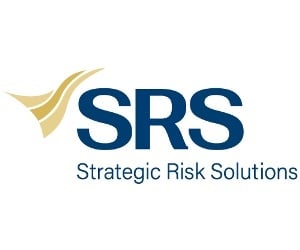Captives in the Construction Industry

October 25, 2017

In a recent webinar titled "The Use of Captives in the Construction Industry," Strategic Risk Solutions provided insights into the state of the construction industry and how captives can play a role in a construction organization's risk management profile.
The following topics were discussed in the October 18, 2017, webinar by presenters Mark Morris, senior vice president, risk finance, Lockton Companies; David Littlehale, director and chair, Construction Industry Practice, Strategic Risk Solutions; and Michael O'Malley, managing director, Strategic Risk Solutions.
- The state of the construction industry
- Construction industry trends and the competitive landscape
- Insurance market solutions and challenges to insuring construction risk
- Considerations surrounding the exploration of alternative risk transfer
- The captive role in an organization's risk management profile
See what they had to say in the following article.
State of the Construction Industry
Construction risk underwriting has changed drastically since the 2008–2010 recession, and the future is trending positive surrounding developments around infrastructure repairs and upgrades. The American Society of Civil Engineers advises that it will take $4.6 trillion by 2025 to make needed repairs and upgrades.
In turn, the industry's risk management approach is very different from what it was prior to 2008, resulting in an uptick in the number of captives sponsored by general contractors and other owner participants across the construction spectrum. Some of the increased captive use may be attributed to context, as the industry finds itself experiencing the following.
- An inexperienced workforce
- Aging crews
- A labor shortage straining quality of work and safety (ultimately pressuring profit margins)
- Projects requiring sophisticated risk management
- Increasing average value of projects and rising material construction costs (pressuring profit margins)
- A liability shift from project owners to general contractors
- More competition from global firms and increased merger and acquisition activity
- Heightened regulatory oversight on job safety
- An increase in project owner allegations of both general liability (means and methods of faulty work) and design professional (faulty design) for construction defect-related losses
- An increase in plaintiffs' counsel alleging punitive damages for large bodily injury losses
Trends and the Competitive Landscape
In terms of the liability shift from project owners to general contractors, traditionally, an architect or an engineer designed a building and the general contractor would build for the owner. The approach now is often "design and build," where the general contractor is taking on responsibility from design to engineering to build, meaning, in terms of minimizing the additional risk it takes on, the general contractor is now responsible for taking on the spectrum of necessary insurance.
Concerns surrounding private sector versus direct federal spending have led to growth in alternative funding arrangements such as public and private partnerships (also known as P3s). In these arrangements, a private company invests in public projects. The organization takes risk on a project but also gets payback out of a revenue stream on the back end of the project. Such projects include highways, wastewater treatment plants, schools, and many other municipal, state, and federal government projects where there may be funding constraints.
Greater competition is leading to more lump-sum turnkey contracts where engineering and construction firms bear project and cost risk while guaranteeing operational functionality. Because of the intense competitive environment, project owners are more easily able to shift this risk back to the general contractor.
Insurance Market Solutions: CIPs and SDI
Controlled insurance programs (CIPs) encompass site-specific coverage where the general contractor and all of the site-specific subcontractors obtain coverage through a controlled insurance program There are two forms of CIPs; contractor controlled (CCIPs) and owner controlled (OCIPs). The main difference between a CCIP and an OCIP is the sponsor (i.e., the contractor or the owner).
With a CCIP, the contractor controls the program and deducts insurance costs out of each subcontractor's bid. The contractor is then accountable for paying all insurance premiums to the insurer and is also responsible for paying all losses within the deductible (these programs are set up as large deductible programs).
The CIP structure greatly simplifies the entire process by creating a more efficient program design (avoids individual deductibles and trading dollars with insurers for low deductibles) and eliminates claims disputes. Because the contractor (or owner) assumes the risk of the subcontractors, the hope is that the contractor (or owner) is collecting enough money, through a revision to the bid, to cover all liability costs.
The main issue with CIPs is that most programs are not fully funded, and therefore a contractor (or owner) ultimately finds itself in a risk-taking position. Determining exact costs and exposures can be a complicated process and covering everything is difficult, leaving a good deal of potentially unaccounted-for risk.
Subcontractor default insurance (SDI) is a product introduced a number of decades ago that essentially replaced bonds that were frequently used prior to its introduction. Years ago, contractors "bonded" their subcontractors. If a subcontractor failed to perform, the contractor would default the subcontractor and the bonding company made the contractor whole for the subcontractor's lack of performance. SDI acts like a bond, but the general contractor is subject to a large retention and also is extended catastrophic coverage for a charge.
Complexities, Challenges, and Alternative Risk Transfer
A variety of complexities and challenges exist in light of the aforementioned industry context. Tailoring an insurance program to meet these challenges can become difficult and comes with increased costs. The industry faces insurance program issues on a number of fronts such as the following.
- The need for manuscript coverage to fill in gaps or to fit a specific risk profile
- Difficult coverages to obtain in the residential market (i.e., products-completed operations for construction defects (may be specific to geography—New York is particularly tough))
- High retentions (large deductibles) driven by claims challenges (i.e., warranty in New York)
- Auto liability risk is becoming increasingly harder to insure—more rate
- Cyber concerns
- Managing subcontractor performance is critical to a general contractor's performance
Alternative Risk Transfer
The evolution of risk management in the construction business—where general contractors and subcontractors are coming up with a level of sophistication around insurance—is driven by a risk need as well as an operational need. For all of the complexities and nuances that it currently faces, the construction industry is unique in its need for alternative risk structures to increase control and flexibility of its insurance programs.
Factors to consider in determining a construction client's insurance program go well beyond looking at insurance premiums and rate. The competitive landscape also drives the need to consider alternative risk structures. To compete in the marketplace, a very competitive insurance program and an efficient program design need to be in place.
Alternative risk applications include but are not limited to addressing the following.
- Absorbing added risk and planning for contingencies (i.e., cost overruns and unaccounted CIP risk)
- Filling in exposure gaps resulting from difference in exposure and allegations
- Deductible funding
The Captive Role in Risk Management

In the second part of the webinar, Mr. O'Malley explained the role a captive plays in a construction organization's risk management profile. Mr. O'Malley outlined the key benefits that different captive types and structures can provide construction organizations and emphasized how the captive type and structure are greatly impacted by size and scope of an organization's operations.
To hear what Mr. O'Malley said, an archived recording of the Strategic Risk Solutions webinar is available.
October 25, 2017